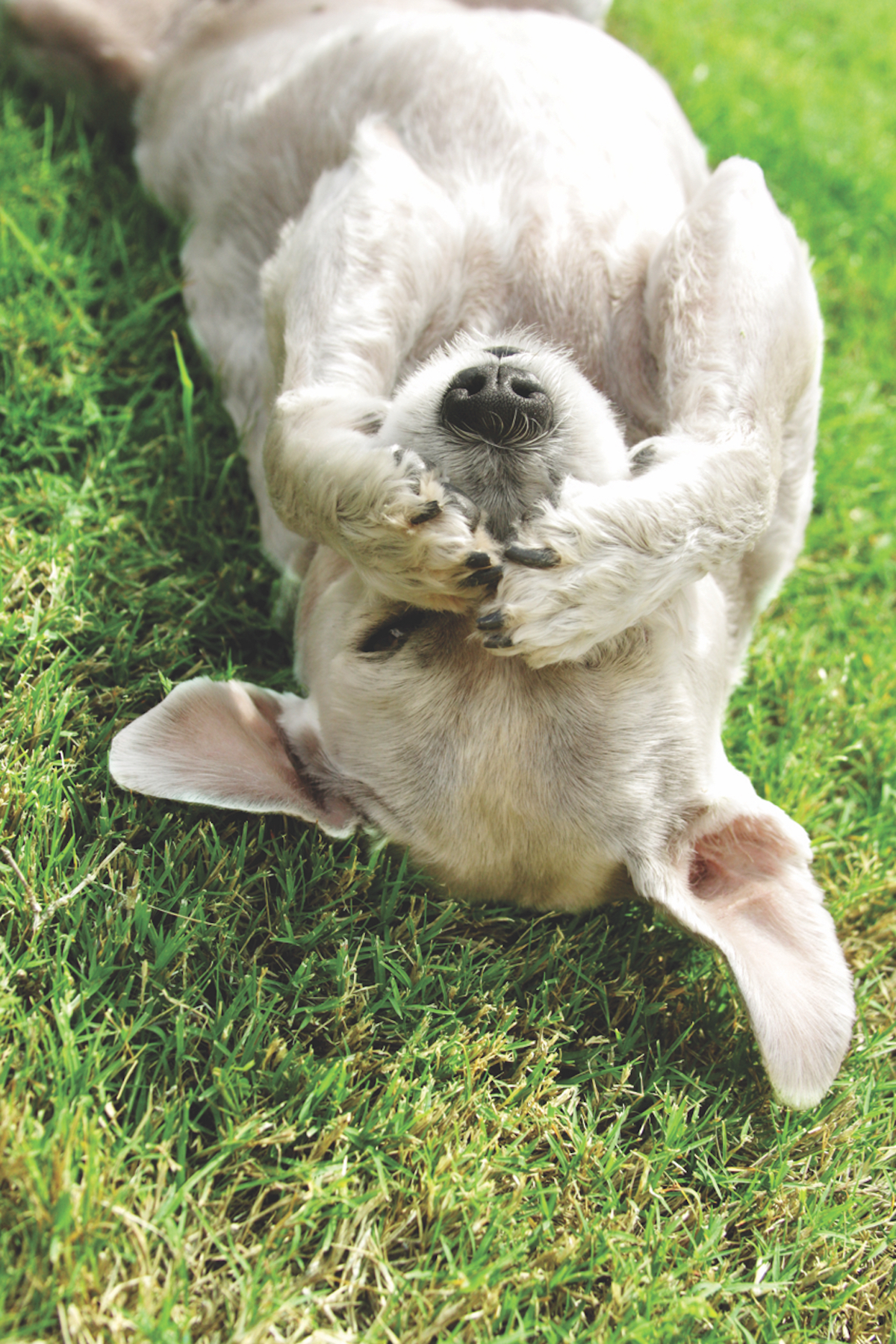By Dr. Parker T. Barker
Misconceptions in the world of dog ownership seems to be rampant. I am constantly amazed at what I hear our humans say to each other, with total conviction, which is totally wrong. It seems there are quite a few myths out there about dogs behavior so I thought now would be a good time to clear up some of the most ridiculous.
Misconception #1: A dog’s mouth is cleaner than a human’s mouth.
I will admit to occasionally licking my private parts. Most dogs, boys and girls, do. And we say hello by sniffing a dogs butt. So that is where my mouth goes. While it’s true most of the germs in a dog’s mouth are dog-specific and harmless to humans, that does not include where that pups mouth might have been. Licking the concrete, eating grass, lapping up dirty rain water, sampling some geese poop and all kinds of other gross items you would never eat yourself can make their way onto your face or even get in your mouth from your dog.
Dogs that do not get their teeth brushed can also have tarter buildup and excess bacteria in their mouth. Another possibility that humans can get is worms. Double yuck. Imagine that the poop Fido sampled has microscopic worms that are easily transmitted. Maybe accepting that sloppy wet kiss from me isn’t the smartest thing to do.
Misconception #2: Only male dogs hump other dogs.
Wrong. Females do it too. Even those ones that are spayed and supposedly well behaved. Research tells us humping another dog (or leg) is an act of dominance and is perfectly normal.
Misconception #3: Indoor dogs don’t need heartworm prevention.
Wrong again. See that mosquito that just flew inside your house and eyed your dog like a buffet? Mosquitoes spread heartworms, and they can land on Fido indoors or outdoors. Heartworm prevention is very important to your dog’s health. A dog infected with heartworms faces a long, expensive treatment process, and that’s only if the damage isn’t too severe when found.
Misconception #4: Dogs eat grass only if they are sick.
Most recent research indicates that quite simply put, dogs just like to eat grass. If the grass is treated with chemicals then it could be hazardous to your pet. Some Vets do believe that dogs will intentionally consume large amounts of grass to induce vomiting if they feel unwell or have consumed something toxic, but this should not be a consistent behavior. Eating too much grass (or too often) may require a trip to the Vet’s office.
Misconception #5: Dogs are colorblind.
The canine retina indicates that dogs can see some colors, primarily blues, yellows, greens and shades of gray.
Misconception #6: Dogs get all the exercise they need in the backyard.
Dogs go outside to do their business and maybe investigate around, but they are natural pack animals and want to be by your side. If not with you, then napping in the shade is another option if you leave Fido outside. But it is doubtful that your dog is running laps in the backyard to get his cardio in for the day. You should plan to take your dog for a daily walk, hike, swim or any activity that gets them moving. Regular exercise helps promote stable weight and increases health benefits. Plus it’s good for you too.
Misconception #7: All dogs hate cats.
While it’s true some dogs may chase a cat and the cat may hiss and flick a paw or two, this misconception is false and is totally dependent on the dog and cat in question. For me, if it is small and furry, it must be a toy on the run, or a new kind of squirrel, so I will chase a cat every chance I get. My sister, Peanut, couldn’t care less about cats and just ignores them. That is why some cats and dogs can live well together. I will admit it is easier if you have grown up with them rather than being introduced to a cat after learning how to chase squirrels.
Misconception #8: A little chocolate won’t hurt.
Chocolate is toxic and life-threatening to dogs. Dark chocolate is more toxic to dogs than milk chocolate or white chocolate. But it is ALL toxic and can make Fido a very sick dog. As little as 1 ounce of dark chocolate may be enough to kill a small dog. So if I manage to get in the Halloween candy and those KitKat bars and Hershey Kisses are missing, I should probably go to the Vet right away. This is truly a case where “just a little can’t hurt him much” is just wrong.
Misconception #9: A wagging tail is a sign of a happy dog.
This is not always true. Tail wagging can also be a sign of fear, anxiety or impending aggression. The tail may wag slower, erratically or while inverted on a dog’s back. Look at the total body language before approaching a dog you don’t know. And just because his tail is wagging, don’t go sticking your face in his face. Be smart about meeting a new dog.
Misconception #10: Don’t waste your money on flea and tick products. Just feed your dog lots of garlic.
Garlic may keep pests at bay during a short walk, but it should not be seen as a standard flea and tick preventative. Opinions differ on the consumption of garlic by dogs, but most agree that trace amounts are okay. So a small piece of garlic bread might be ok depending on the size of the dog. But a whole loaf? Probably not a good idea. The difficulty with garlic is knowing at what amount it becomes toxic to your dog. I recommend using a tried and true flea and tick medicine that your Vet recommends. Too much garlic can cause an anemic reaction, gastrointestinal problems and red blood cell damage, according to the ASPCA, all of which are not good for ol’ Fido.
Misconception #11: A dry or warm nose is a sign your dog is sick.
Dog noses are not always cool and wet, and occasional dryness is perfectly normal. There are also many reasons your dog may have a dry nose. A runny nose, colorful discharge or a crusty buildup is not good, so head to the Vet if you notice these symptoms.






